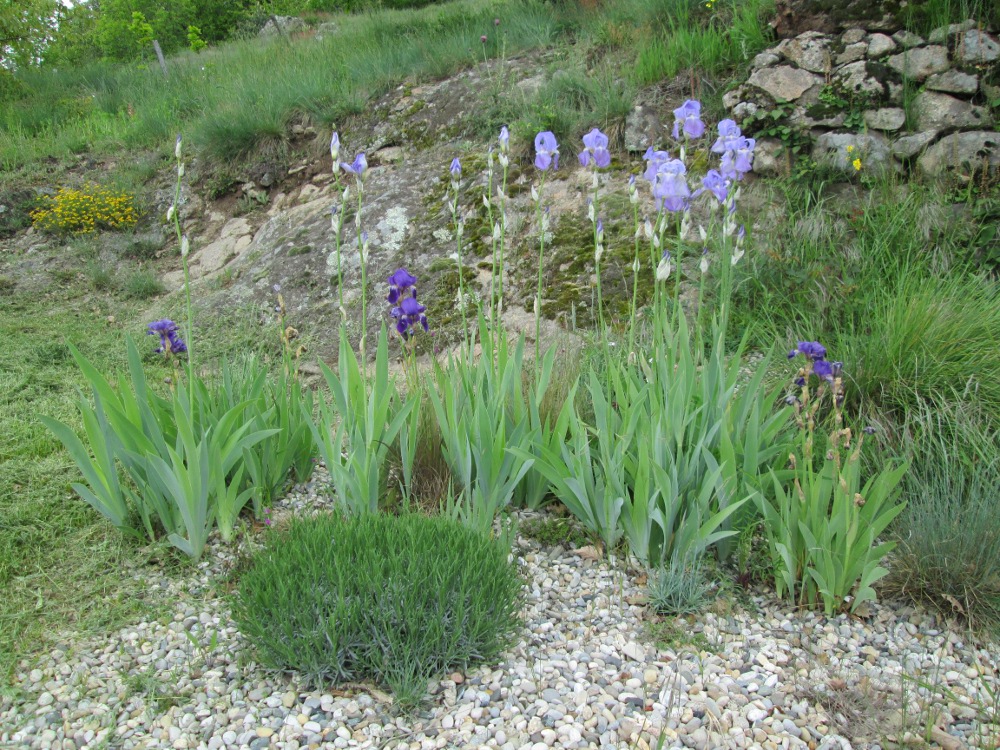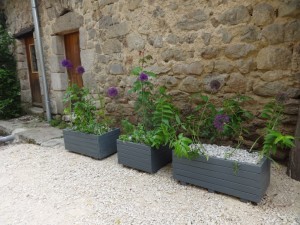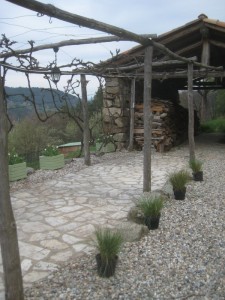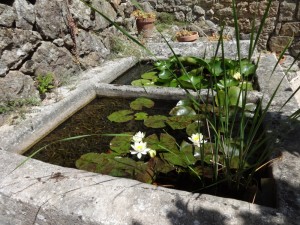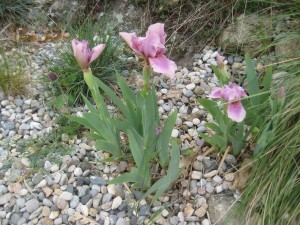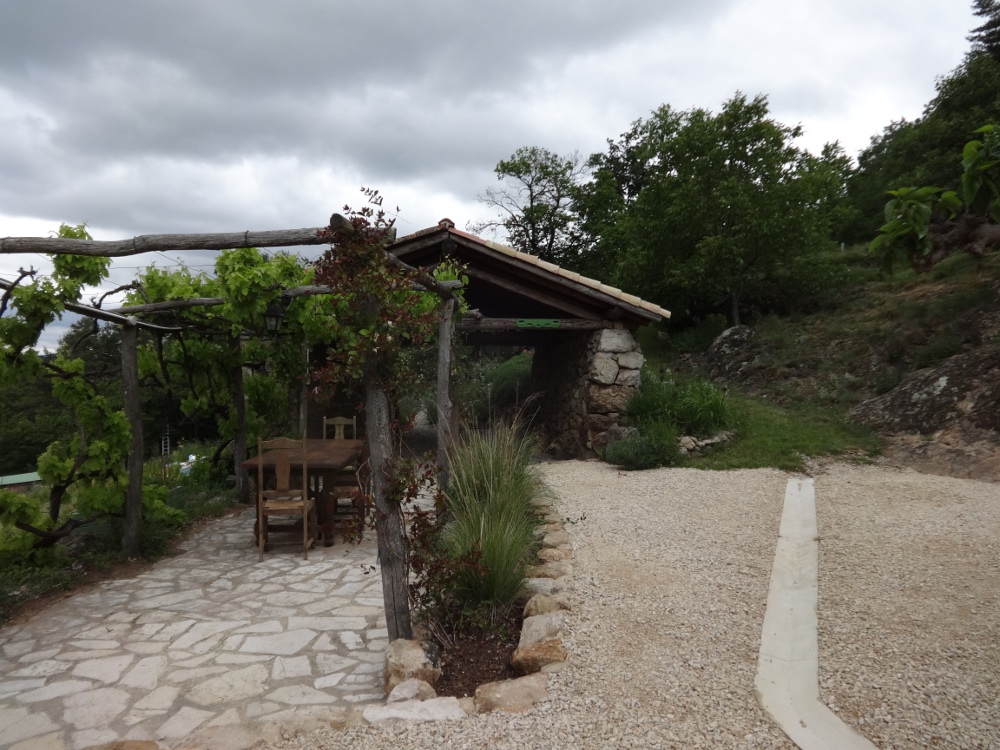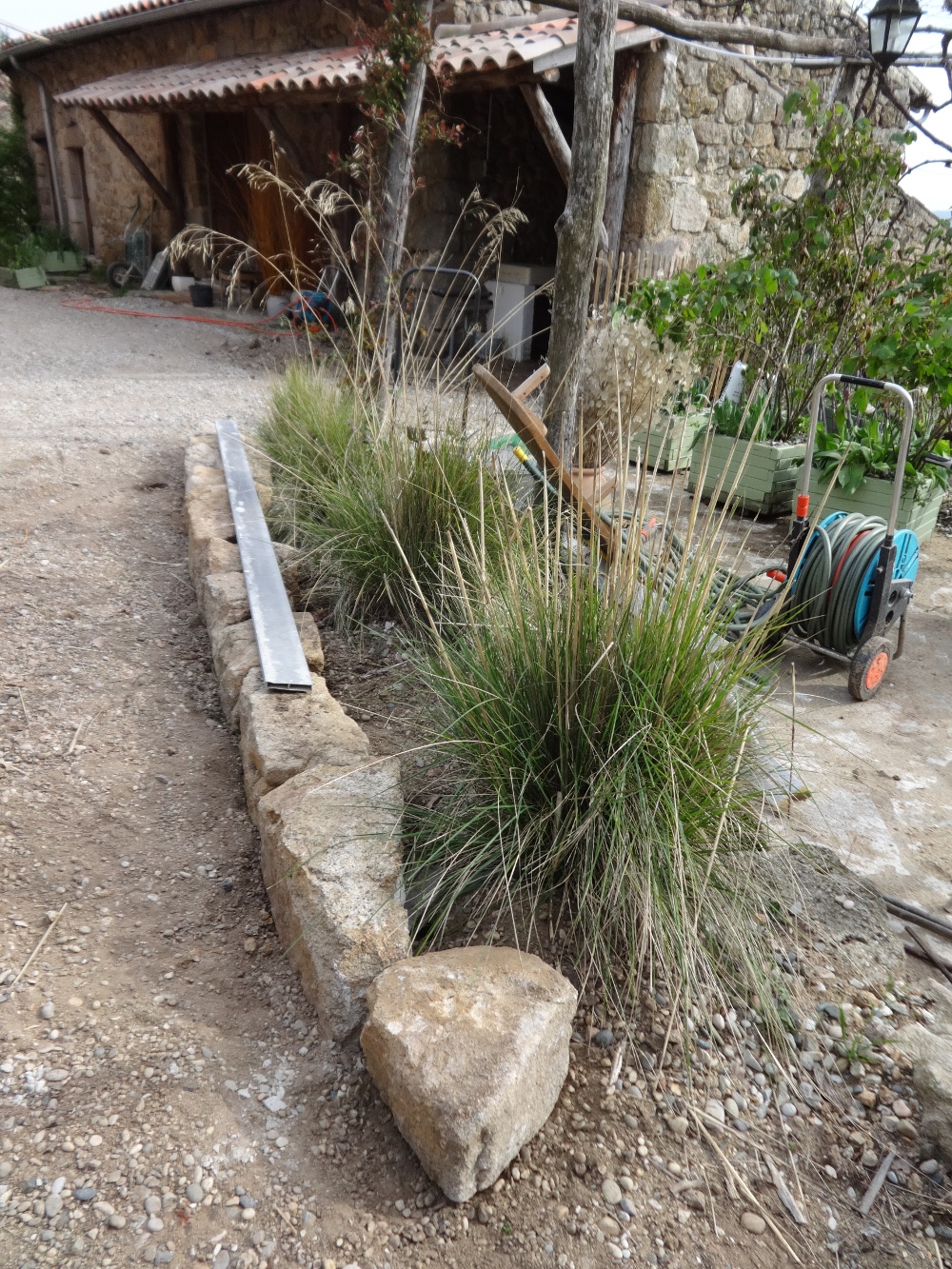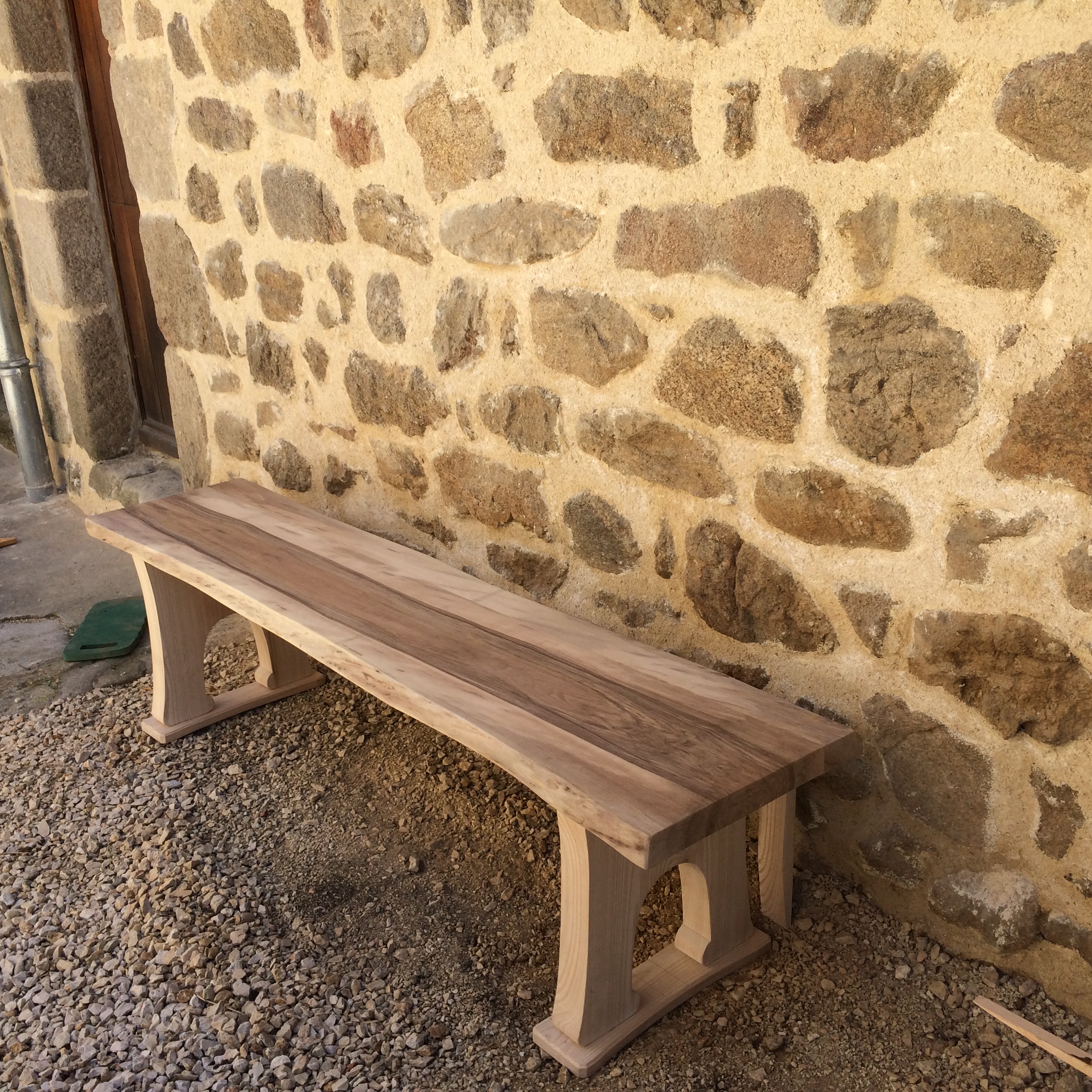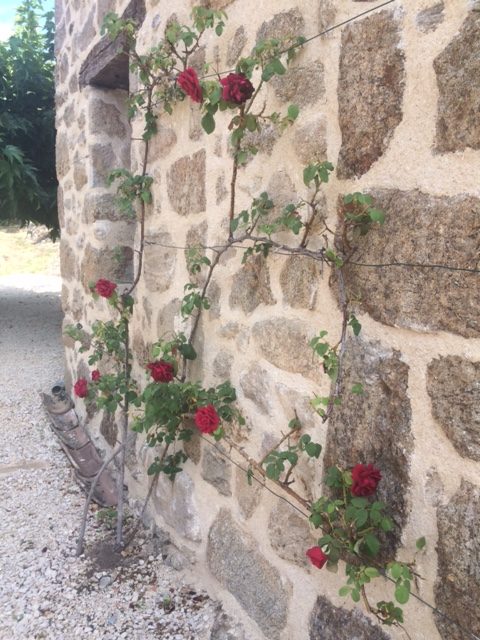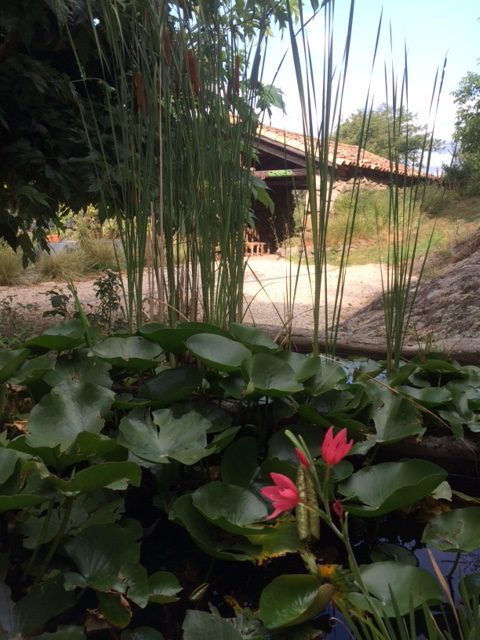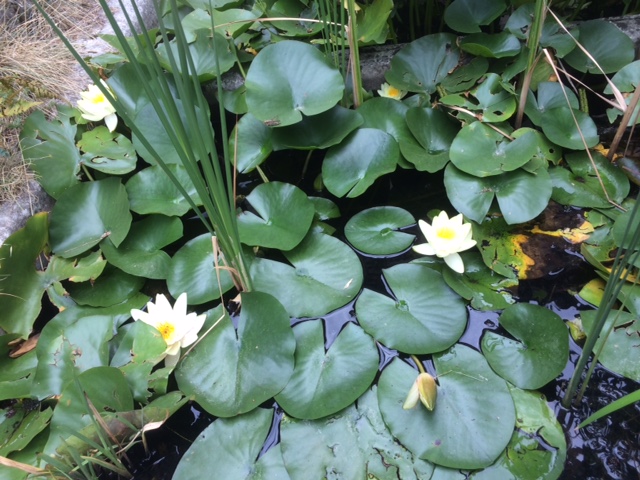The courtyard – a gravel garden
 I was just tucking into a bit of bread and cheese for lunch; and found it was hard on the inside and soft on the edges. A mouthful of great cheese, but sadly, stale bread.
I was just tucking into a bit of bread and cheese for lunch; and found it was hard on the inside and soft on the edges. A mouthful of great cheese, but sadly, stale bread.
Not stale enough to want to feed it to the horses, but just not fresh. But it did make me think that some parts of this farm are a bit like that. Hard with soft edges. And fed by horses.
The courtyard between our two houses is exactly that. And it is probably not a lot different from other farm courtyards.
 It is utilitarian in purpose. It gets you from one house to the barn to the other house to the rest of the farm.
It is utilitarian in purpose. It gets you from one house to the barn to the other house to the rest of the farm.
And it had never been a space one would consider creating a garden.
When we first saw this farm it was mid winter; nothing grew. And the courtyard was just a hard surface of gravel and stone. With a rather interesting sand pit taking up one side.
 By June when we finally moved in, we were confronted with a jungle (but luckily not the sand pit, which had been removed).
By June when we finally moved in, we were confronted with a jungle (but luckily not the sand pit, which had been removed).
And a huge shrub of box right beside the front door. That was odd. And it was always covered in black sooty sap from all sorts of aphids and pests.
Now some people like hollyhocks (alcea rosea). Sadly I am not a fan. But they had self seeded themselves brilliantly all across this expanse of hard stone. And they were that sickly pink that makes you think of Barbara Cartland, rather than tall stunning flowering plant.
They had to go.
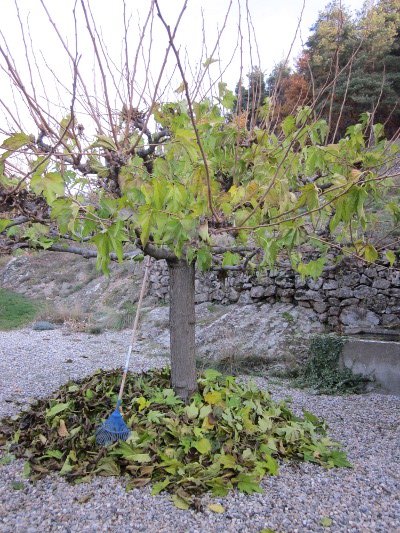 But I scratched my head over the rest of the courtyard for quite a while.
But I scratched my head over the rest of the courtyard for quite a while.
The one constant in this space is the tall mulberry tree in the centre. This is our ‘shop sign’. It is a symbol of the fact that this was a silkworm farm back in the 17th century and up until the chestnuts took over as the main crop.
To have such a mulberry at your front door was a way of saying with pride – we harvest silkworms and spin the threads to make cloth.
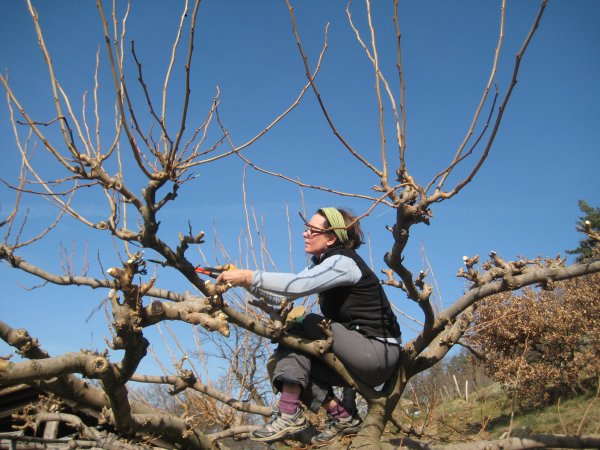 It is a grafted and special mulberry that barely fruits. A bonus for all of you who remember just how sticky and staining those delicious red fruits are like when they are juicy and ripe.
It is a grafted and special mulberry that barely fruits. A bonus for all of you who remember just how sticky and staining those delicious red fruits are like when they are juicy and ripe.
It’s a fine tree. Even if the branches are just that little bit low. (People were smaller back then and could easily sit under its shade.) It does take a lot of management mind you. Every autumn the leaves either drop in one freezing night with no wind. Those are my favourite years.
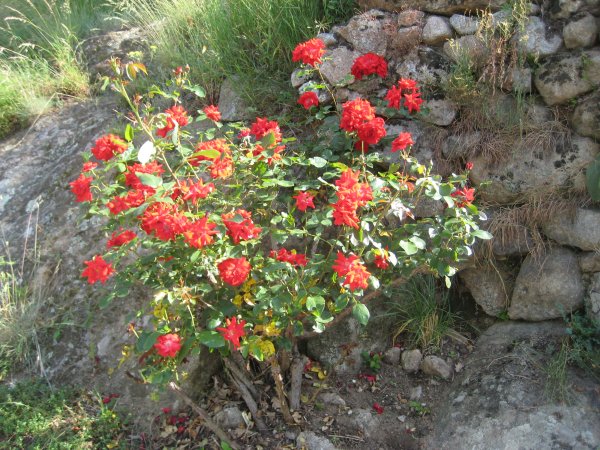 Or they drop over the course of a month and I spend all that time chasing the fallen leaves and raking and raking and removing the debris.
Or they drop over the course of a month and I spend all that time chasing the fallen leaves and raking and raking and removing the debris.
And every spring I am forced to give it a brutal haircut. I had to learn how to do this as it looks so silly. Think of all those plane trees along the sides of roads here in France. Imagine how tall they could grow if we let them.
Some years, when I’m perched precariously on a tall branch and am leaning out with heavy loppers to remove the annual growth I think – one year I’m going to ‘forget’ to prune this tree. I wonder what effect that will have?
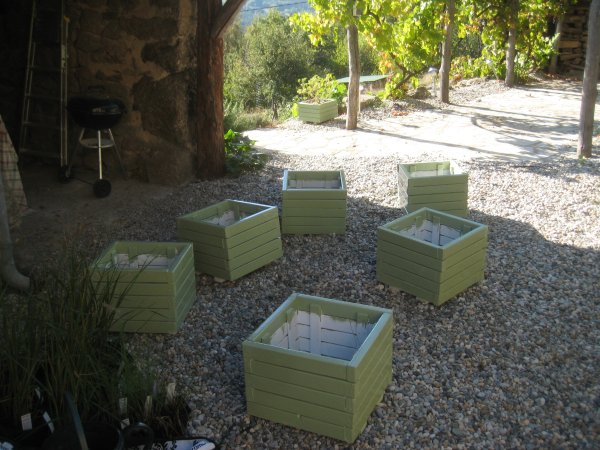 For now I behave and do as fashion dictates.
For now I behave and do as fashion dictates.
I did not keep the ghastly rose in the far corner for long. Coral pink. With such short stems that the only way you could enjoy this plant as flowers for the house was to float the roses in a bowl.
But it gave me an idea. Roses work here.
 There was another rose planted against the guest house wall – an acceptable dark crimson climber that was flowering feebly when we arrived.
There was another rose planted against the guest house wall – an acceptable dark crimson climber that was flowering feebly when we arrived.
It didn’t have much scent (now there’s a surprise) but it was alive and just looked a bit lonely on its own.
Living in England, you cannot escape the fabulous varieties of roses available; especially the David Austin repeat flowering old English roses. I could have been sensible and gone for one of the hundreds of French varieties, but no. I went for the ones I knew and loved.
 As a reward for reading this far have a look at my David Austin Gertrude Jekyll roses planted in first three (and now five) pots on the edge of the courtyard.
As a reward for reading this far have a look at my David Austin Gertrude Jekyll roses planted in first three (and now five) pots on the edge of the courtyard.
I tried planting them in the ground when I first bought them, bare root back in 2008. But it was a disaster.
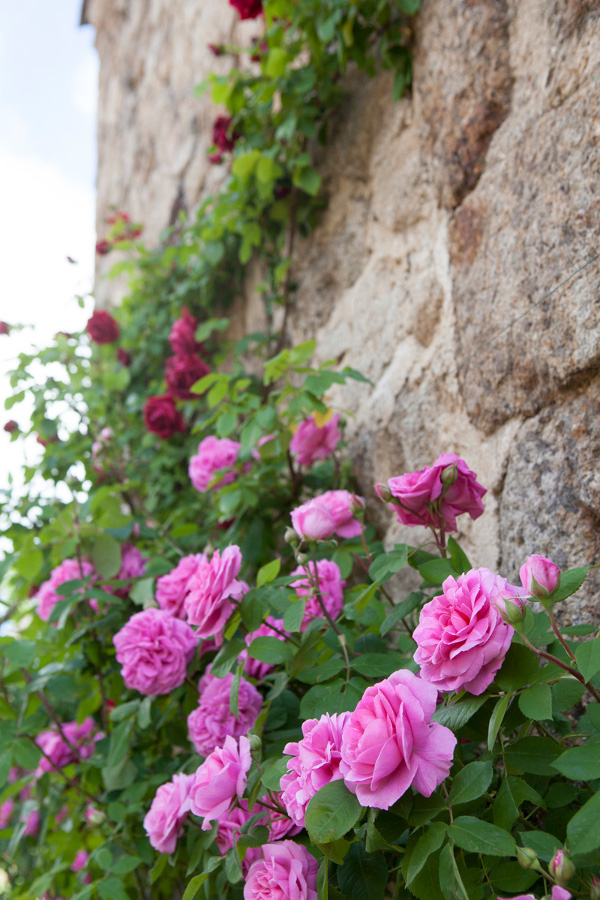
The water didn’t empty, even after a day. I have no idea what is under the ground of the courtyard, but free draining it aint.
So planters. Never the best solution in a climate that can get very hot and dry in summer.
But I did a bit of nurturing and the roses have rewarded me with stunning blooms. And a bonus crop for my strawberry and rose petal jam.
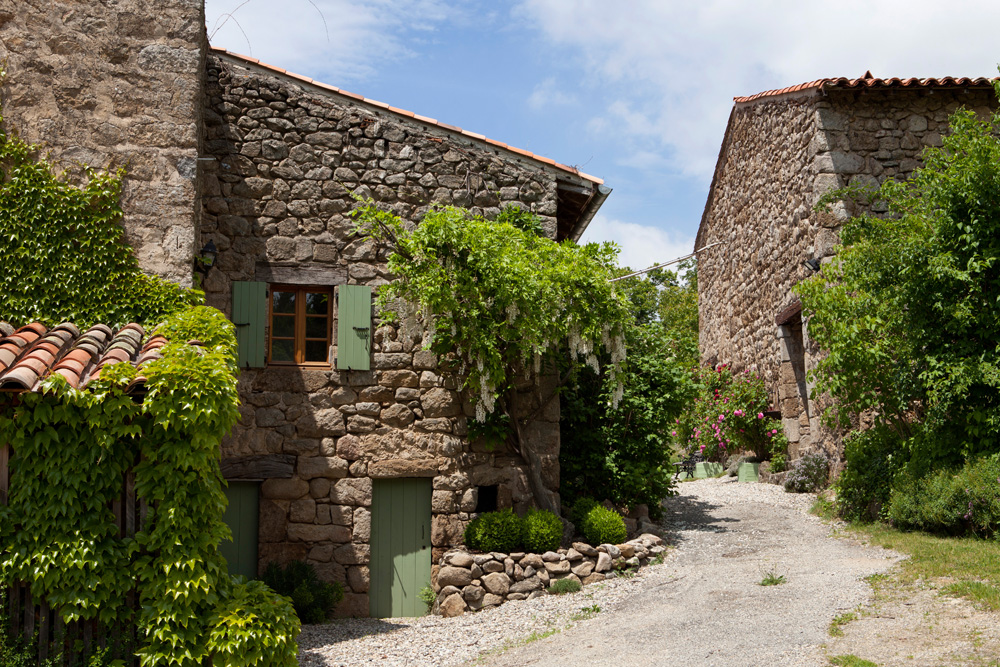
And recently I have planted up three pots on the other side of this narrow driveway so that these roses grow on the north side of our house.
That way I hope to extend the season by a teensy bit. They are more shaded here.
But wait, the planters have changed from green to grey.
I’m getting ahead of myself.
You have to suffer through the gravel work. As much as I did.
I knew I had to resurface the entire courtyard (100 square metres) back at the very beginning. And it made sense to use gravel. It’s a relatively cheap material and readily available from a quarry down in the valley by the Rhone.
But first I wanted to make sure the weeds didn’t take over as soon as my back was turned.
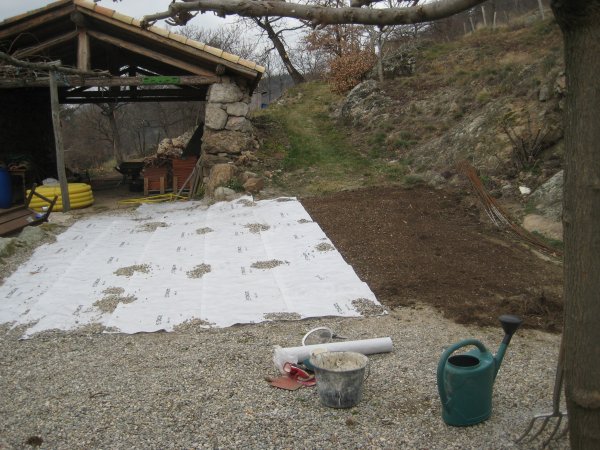
And then, goodness I was keen, I shovelled two cubic metres of gravel over the entire surface.
I seem to recall it took me a week, and I moved the soil from the gravel mountain using just a bucket and spade.
And for an encore I cut down the box shrub beside the house. It was a ruthless times for plants in the wrong place back then.
So I had what you would call a blank canvas.
We had to keep the central part of the courtyard clear as we still use it as a driveway every now and then.
But at last I could start tinkering around the edges.
I planted four (now five) giant stipas on the edge of the courtyard that faces our pergola and grape vines. They have been one of the best (and cheapest) investments.
Tough and sturdy and you don’t even need to cut them back in spring.
My kind of plant.
This year they even flowered for the first time. I never water them, rarely do anything to them; just pull out the dead grasses every spring or so when I notice they are getting a bit ratty.

On the opposite side of the courtyard is the original outdoor laundry where the farmer’s wife would have washed all the clothes.

I decided to do very little with it (apart from trying to grow ivy around it for five years and gave it up as it looked lame).
But I have planted the water troughs with lilies. So it looks as though I made a small effort rather than leaving it grey and stark.

I planted a line of pots with hardy trusty sedums. And trust your eye will be drawn to those rather than the eyesore of a very poorly made set of steps.
But what of the gravel garden itself?
You are right, planters, pots, grasses. Not much of the real gardening plants.
But in the top right hand quadrant I decided to try and emulate an idea from Beth Chatto’s garden in Essex in England. She has a fascinating gravel garden with a large number of grouped plants that flow down from a central bed.
I started with irises – the stalwart of a hot dry gravel garden. And bought another stipa, became daring with some Hemerocallis and a beautiful lavender. And then tried to weed in between.
The weedproof fabric was hardly doing its job by this time. So much soil falls into the gravel over the seasons. And I was forever pulling small festuca glauca grass seedlings out of the area.
But by the time Carla Coulson, the lovely photographer for House and Garden magazine arrived in June 2013 I was feeling pretty smug.
All was going swimmingly.
Until our courtyard gravel decided to take a swim.


Radical garden design? We were forced to start again.
First up we had to clear the mess. And that was only achieved thanks to the incredible generosity of our neighbours and friends.
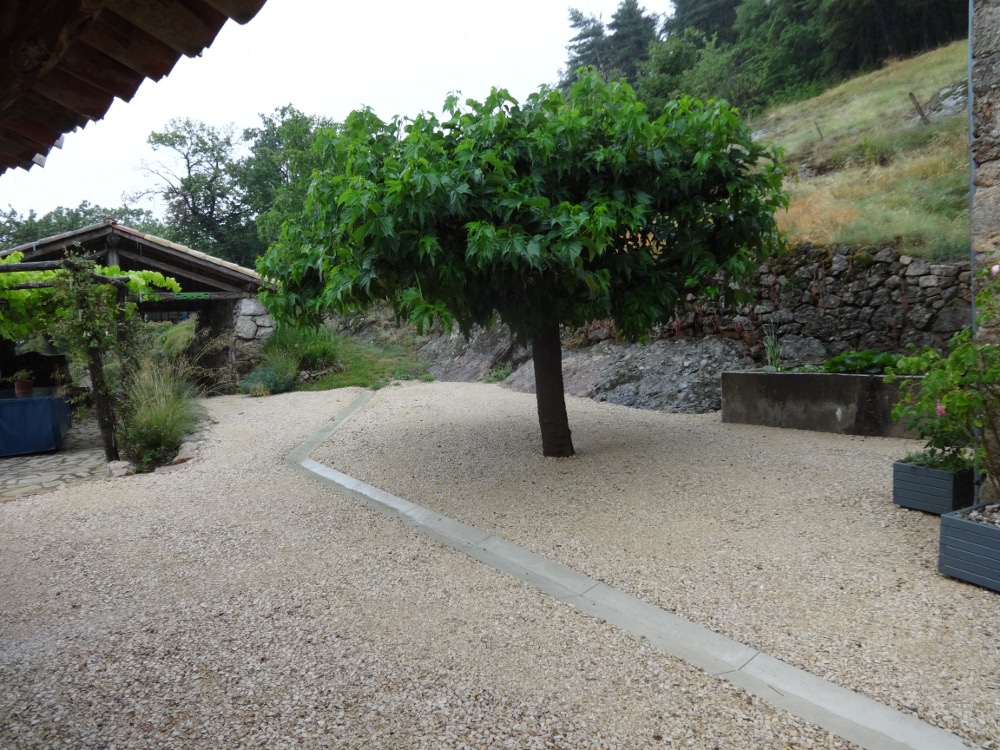
So we came up with a design that involved beaten earth (concassé in French) a sort of hoggin.
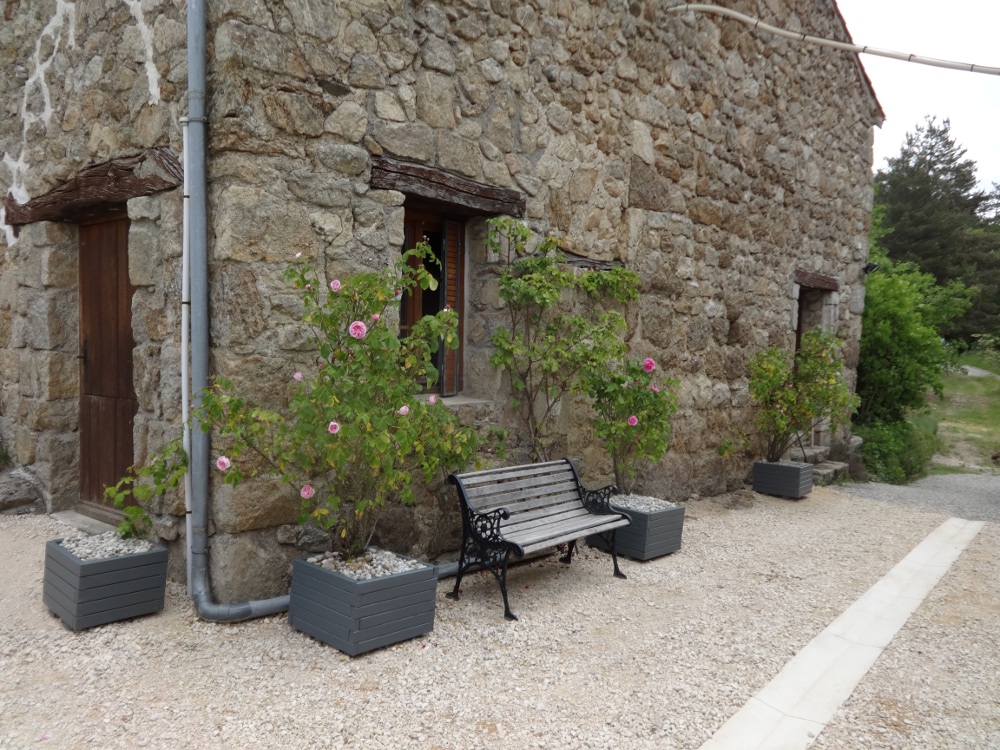
It is oh so much neater now.
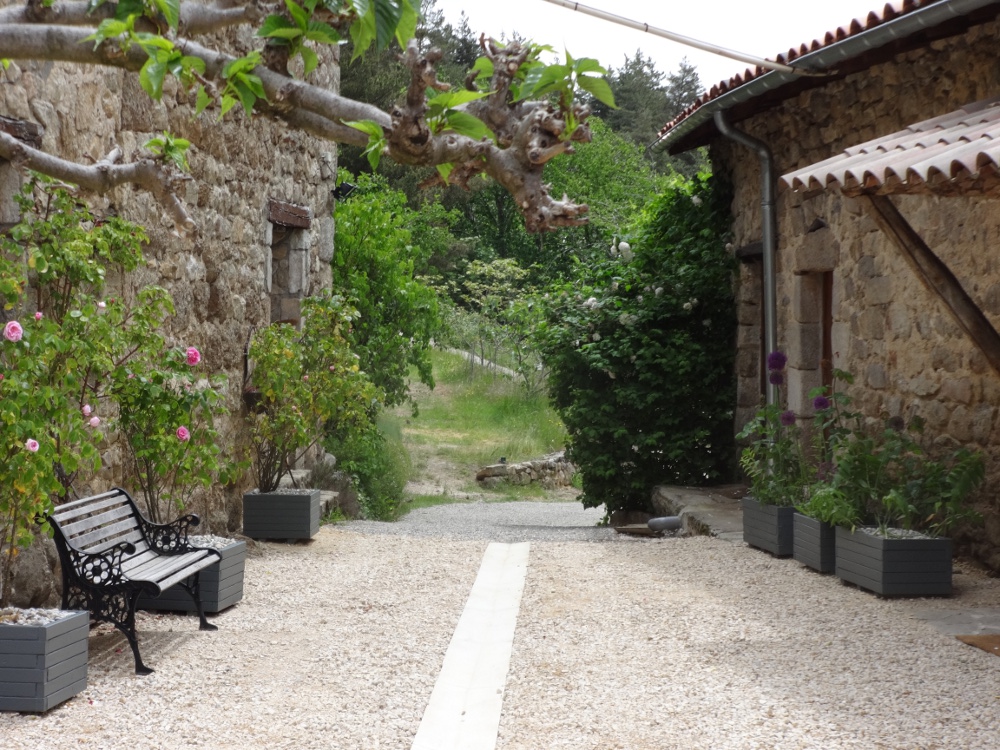
I can’t say I adore the finished effect; but at least it forced me to repaint all the planters an interesting Farrow and Ball grey rather than the Saxon Green.
And best of all, we now have the edges of the stipa garden well corralled.
And maybe, just maybe, I can start to sneak a few of my favourite irises back into the edges of this garden again.
***
2018 update.
We lived with the pale coloured rill for about six months. The aesthetic pronouncement was ‘a bit municipal’.
So I painted it Downpipe. And it looks so much more chic.
The roses in the planters suffered from relying on just me for watering. Their roots were now confined to the planters, rather than sneaking into the earth beneath the gaps in the wooden pots.
I eventually gave up and moved most of them to the potager.
In their place went beautiful wooden benches made by our friend Tony.
And in case you are wondering why the walls are different; they have been thoroughly repointed and both houses facing the courtyard gussied up.
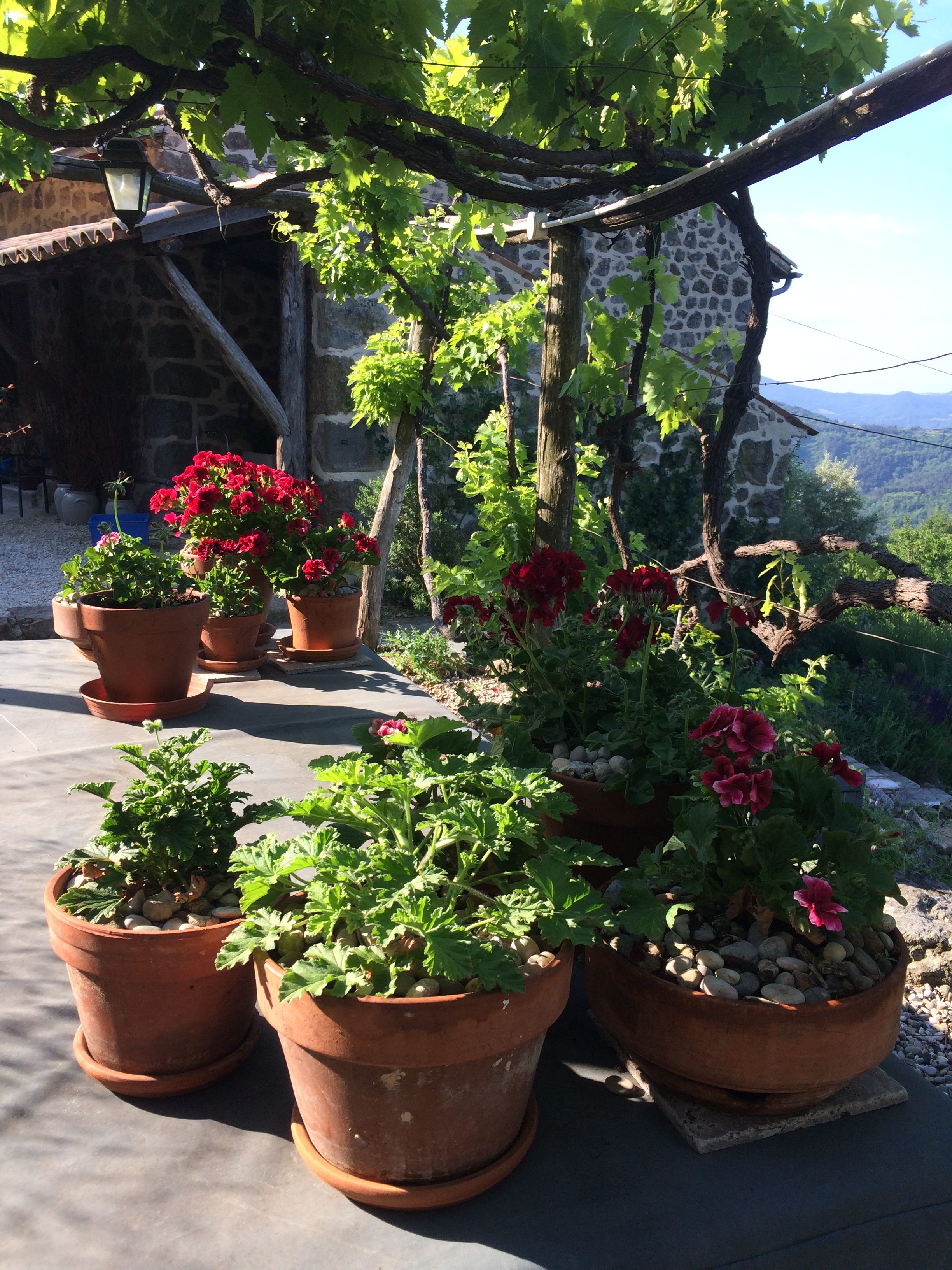
I added more colour in the form of drought tolerant geraniums – especially up the steps of the newly repaired side of the courtyard.
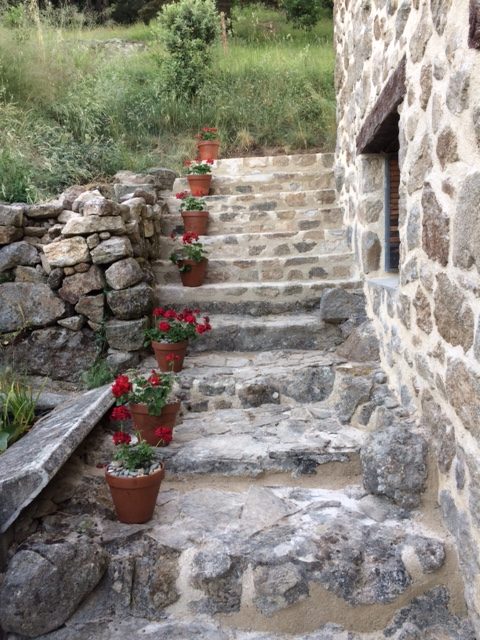
And I have even been shamed into trying to make the basin in the courtyard a bit more colourful too. I had hoped these water plants would flower red like the geraniums beside them.
Ah well, you can’t win them all.
